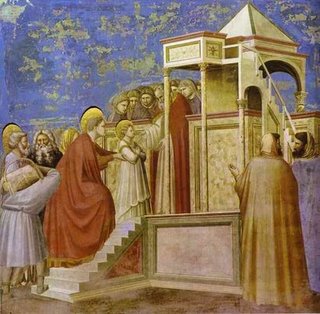"Pere Marquete and the Indians" by Willhelm Lamprecht. Raynor Library, Marquette University. Public Domain. Source: Wikimedia Commons
Last Sunday, the second to last Sunday of October, was World Mission Sunday. Mission Sunday was created in 1926 by Pope Pius XI as a day of prayer for missions and for the Propagation of the Faith. An additional collect for the propagation of the faith was in the Tridentine Mass required to be said on World Mission Sunday.
We should not underestimate the impact we can have on the missions and the conversions of pagan souls to the True Faith instituted by our Divine Lord.
One year after naming World Mission Sunday, Pope Pius XI in 1927 named both St. Francis Xavier and St. Therese of Lisieux as the patron saints of missions. St. Francis Xavier was a prolific missionary. Despite language problems, lack of funds, and resistance from the Europeans as well as the natives, he persevered. St. Francis converted more people in his life than anyone since the Apostle St. Paul. He baptized over 50,000 in 10 years, converted the entire town of Goa in India, and he labored long in Japan.
But why St. Therese of Lisieux, along with St. Francis Xavier? She died at the young age of 24, after spending several years in a cloistered monastery. She did not teach catechism, she did not baptize anyone, and she did not go on any foreign missionary trips. So why is she a co-patron of missions? Pope Pius XI recognized that prayer and the contemplative life were essential to support those who were active in the mission fields. St. Therese, in her own autobiography, wrote:
“Our vocation is not go to reap in the fields of the mature crops; Jesus doesn’t tell us: ‘Lower your eyes, look at the fields and go and reap’. Our mission is more sublime still. Here are Jesus’ words: ‘Lift your eyes and see. See how in heaven there are empty places, he asks you to fill them. You are my praying Moses on the mountain; request workers of me, and I will send them. I only wait for a prayer, a sigh of your heart! The apostolate of prayer, is it not so to say, higher than that of preaching? Our mission, as Carmelite, is one of forming evangelical workers that will save millions of souls whose mothers we will be”We can join the work of St. Therese by praying on Mission Sunday and even daily for the conversion of non-Catholics, for the reversion of lapsed Catholics, and for the success of foreign missionaries. Missionaries are needed in both foreign lands and in many of our own cities and streets. We pray for all of them to be successful. We pray for the Lord to send more missionaries into the harvest.
Collect Prayer for the Propagation of the Faith:
O God, Who willest that all men should be saved and should come to the knowledge of the truth: we beseech Thee, send forth laborers into Thy harvest, and grant them grace to speak Thy word with all boldness, so that Thy word may spread swiftly and be glorified, and all nations may know Thee, the only God and Him Whom Thous hast sent: even Jesus Christ, Thy Son, our Lord: Who with Thee liveth and reigneth.





.jpg)
.jpg)












